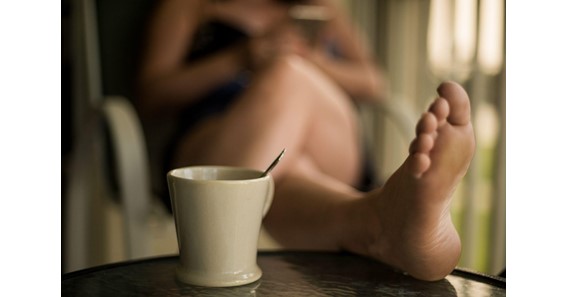Cracked heels can be more than just a cosmetic issue. Not only do deep cracks in heels look unsightly, but they can also be painful and even lead to infection. If you’re fed up with cracked heels, there are things you can do at home to help heal them. But there are also times when you should see your doctor.
In this post, we’ll give you some tips on how to treat and prevent cracked heels, as well as when it’s time to see your doctor. Keep reading to learn more!
Four Common Causes of Calluses and Cracked Heels
There are several causes of calluses and factors that can contribute to the development of cracked heels. Four of the most common are:
- Dry skin — This is one of the most common causes of cracked heels, as when the skin on your feet is dry, it’s more likely to crack. Dry skin can be caused by weather conditions (such as cold, dry air), not drinking enough fluids, or taking certain medications (such as diuretics).
- Harsh chemicals — Harsh chemicals are found in many soaps and shower gels, as well as feet deodorants. If you use these products on your feet, they can strip away the natural oils that help keep your skin moisturised, leading to dryness and cracking.
- Standing for long periods — If you spend a lot of time on your feet, that can put extra pressure on your heels, which can cause calluses and heel cracks.
- Wearing open-back shoes — Open-back shoes (such as sandals or flip-flops) do not support the heel, which can cause the heel skin to crack. This is especially true if you have flat feet or high arches.
Click here – What Is Bullnose Edge?
Risk Factors for Cracked Heels
Some of the reasons you may be at an increased risk of developing calluses and deep cracks in heels include:
-
- Age — As you get older, your skin becomes thinner and collagen and elastin production reduces, which means you are more likely to develop cracks in your heels.
- Weight — Being overweight can lead to your skin cracking because of the additional pressure on your feet.
- Sweaty feet — Some people will sweat more than others. If you have sweaty feet, this can contribute to dryness and cracking.
- Certain medical conditions — Some medical conditions, such as psoriasis, eczema, and diabetes, can increase your risk of developing cracked heels.
- Foot deformities — If you have a foot deformity, such as bunions or hammertoes, this can put additional pressure on the skin of your feet and cause them to crack.
Treatment Options for Deep Cracks in Heels
If you have had enough of your cracked heels, several treatment options are available. These include using products such as foot peels, cracked heel cream and foot files, and prescription medications.
Before consulting a doctor or podiatrist about your cracked heels, here are a number of things you can do at home to treat them:
Use gentle products — Swap your shower gel for an oil-based one to support the moisture levels in your skin. And don’t spray deodorant on your feet (even foot deodorants).
Keep feet dry — Change out of damp socks as soon as possible and always make sure you dry your feet properly after a shower or bath.
Use a pumice stone or foot file — Exfoliate your feet with a pumice stone or foot file two to three times a week by gently rubbing the dead skin on your heels. Do not scrub too hard, or you may damage the healthy skin underneath.
Apply a heel balm or cream — There are many types of heel balm and cracked heel cream that can help to support skin moisture levels and treat calluses and dry, cracked heels.
Click here – An Introduction to Trading for Novices On the US Stock Market
When to See Your Doctor
If you have cracked heels, there are a number of things you can do at home to treat them effectively. However, if you have deep cracks in your heels that are severe, bleeding or become infected, it’s time to see your doctor or podiatrist for further evaluation and treatment options. Your doctor may prescribe a stronger medicated cream, or you may need antibiotics to clear up a bacterial infection.
Additionally, if you have tried treating cracked heels and have not noticed an improvement, it’s important to see your doctor so they can rule out any underlying medical conditions and provide additional treatment options. With this, pedorthist specialists are trained to diagnose and treat various foot issues, helping patients to improve their mobility and quality of life for individuals seeking relief from pain or discomfort.
Takeaway
Cracked heels can be unsightly, painful, and difficult to get rid of, but thankfully there are simple callus foot peel products that can help. There are also ways to prevent cracked heels from returning: be sure to wash your feet daily, keep them dry and apply heel balm or cream daily, wear supportive shoes and drink plenty of fluids throughout the day.

